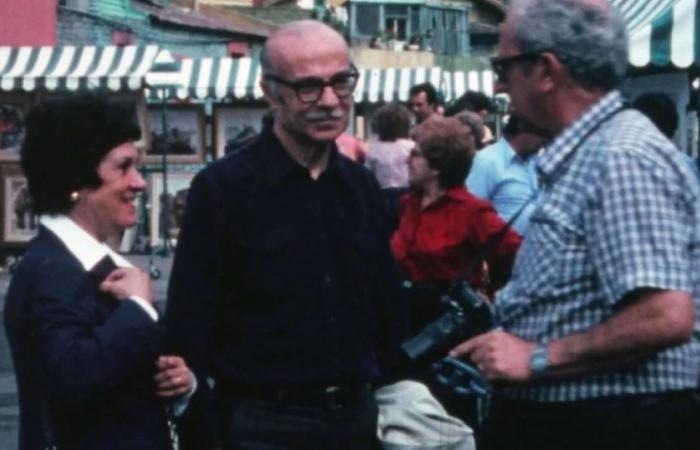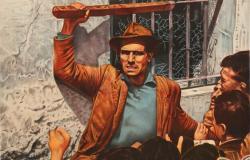Ernesto Sabato, one of the most influential literary figures in Argentina, is remembered on the 113th anniversary of his birth. Known for his emblematic works such as The tunnel and About heroes and gravesSabato not only left an indelible mark on literature, but also on critical thinking and reflection on the human condition. This anniversary will be commemorated with the screening of a documentary that explores his life and legacy, allowing new generations to discover the relevance of his work and its impact on contemporary culture.
He June 26 at 6 p.m.in the President Alfonsín Hall of the Legislature Palace in Buenos Aires, the documentary will be screened Conversations with Ernesto Sabatodirected by Paul Caesar with original music by Guido Sabato. The event will have free admission. The film provides a window into the contemplative figure of Ernesto Sabato, addressing his perspective on Argentina in 1983. In addition, on Saturday, June 29 at 5:30 p.m. it will be screened again at the Club Defensores de Santos Lugares (Ernesto Sabato 2162 – Holy Places).
Originally filmed in Super 8mm shortly before the end of the dictatorship in Argentina, the documentary was conceived and produced by Ana Maria Novick. The work had a new life in 2023 when Novick recovered the material, which was then digitized and edited in 2K, including the addition of music composed by Guido Sabatograndson of the writer.
Pablo César, the mind behind the direction, expressed his enthusiasm for the film’s restoration: “I am very happy that this film could be rescued. I had put it together at the time, but we were missing a final assembly and the sound process plus the music”Caesar said. The film captures Ernesto Sabato in emblematic places that inspired his novels, talking about the social and political reality of his time. Furthermore, the durability of the film support stands out in comparison with other image recording media.
Ana María Novick, who had the original idea for the documentary, narrates the process and the challenges faced. “Many times in my life I had to fight to be able to realize ideas that appeared to me at the wrong time. From a very young age I had the opportunity to be in contact with wonderful creators”Novick explained. In the 80s, she saw the need to document the lives and creations of important figures, which led her to collaborate with Pablo César and Ernesto Sabato.
The project, which was carried out with practically no budget, was proposed to Walt Disney’s then representative in Argentina, although it failed to advance due to a lack of understanding of the importance of the material. “I remember his simple office on Córdoba Street in front of the plaza and my sadness when I realized that he didn’t understand anything about what it was about,” Novick said. Despite this setback, the material was carefully stored until it was rediscovered decades later.
The film’s recovery not only allowed for the addition of original music by Guido Sabato, but also included key contributions in sound post-production by Emiliano Monsegur and image post-production by Gorky Films. Sebastián Tolosa was responsible for the digital scanning process of the Super 8mm, and Liliana Nadal was in charge of the editing. The graphic design of the poster was done by Gabriel Real.
The documentary highlights the importance of film media in the preservation of history. “In Argentina, films have been digitized, but to preserve them, the only thing that can guarantee at least 128 years of existence, as has been scientifically proven so far, is the film medium,” Caesar explained. The quality of the material, despite the time elapsed, reflects the superiority of the film over other means of conservation.
Ernesto Sabato He is portrayed in the documentary in the settings that inspired his work. The film also captures the political and social climate of 1983, the year in which Sabato was summoned to preside over the National Commission on the Disappearance of Persons (CONADEP).
With a running time of 45 minutes, the film offers an intimate and reflective look at Sabato. After the screening, director Pablo César will interact with the audience and answer questions, providing a unique opportunity to delve deeper into the author’s history and legacy.
The presentation of Conversations with Ernesto Sabato It is not only an occasion to rediscover the figure of Sabato, but also a testimony of the collective effort to preserve cultural memory through cinema. “I want to thank the entire team who made it possible for this historical document to reach the people,” César concluded, emphasizing the importance of collaboration and the passion behind this project.






